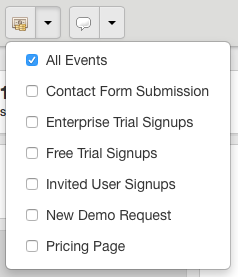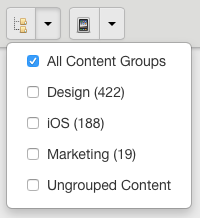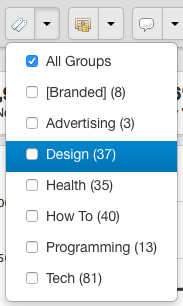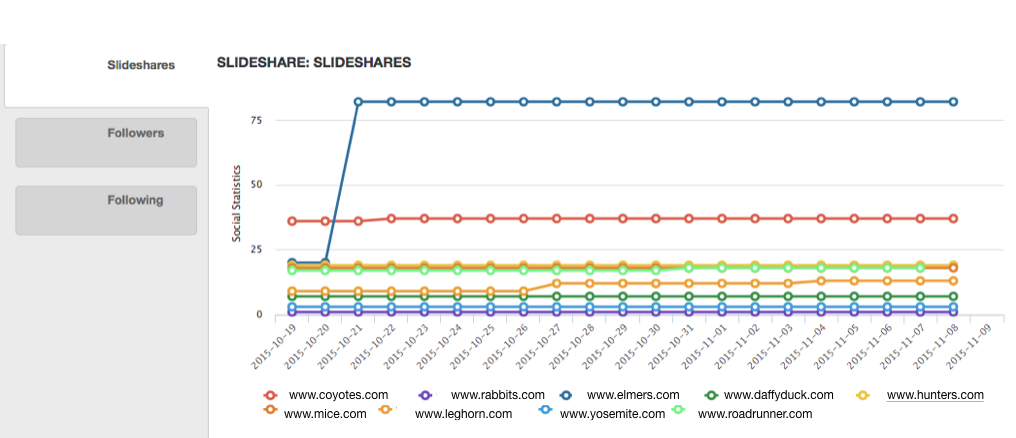Whether you’re a B2C brand or a B2B brand, the end of Q4 means getting budgets for 2016 finalized and strategies in place to start the new year off ready to meet goals.
For many SEO and marketing departments, this year’s resolutions include a commitment to creating more content, efforts toward better measurement, and improving their ability to show contributions to the bottom line. To help you keep your resolutions, we thought we’d give you some ideas for tools and best practices to get started now, instead of waiting until January.
Tracking Keywords Still Important
Tracking keywords is harder than ever with keywords not provided and all the other changes that have happened, and continue to happen. If you want to make a resolution that will make tracking keywords and discovering what’s working and what’s not working a lot easier, consider creating keyword groups.
Create keyword groups to track:
- Products
- Features
- Campaigns
- Audience segments
- Topics
- Messages
- Geographies
“One of my tips, if you’re not using a tool to make it super easy to create these groups, reconsider your tool. Having a tool that makes it easy to create keyword groups will give you the best insights and the ability to make decisions based on the performance of general topics for both you and your competitors,” advises Erin O’Brien, COO GinzaMetrics.



Measuring Content in Groups
The same reasoning exists for creating content groups as it does for keyword groups. If you create content groups that mirror your keyword groupings, you’ll get data that allows you to target your efforts and create an overall picture of the topics that are resonating with and converting your audiences.
In addition to the creating content groups that are the same as keyword groups, group content by content type to track how your audience is consuming your content. Create content groups to compare and contrast the performance of different content types or locations. Content types include:
- Videos
- Podcasts
- White papers
- Blogs
- Case studies
- SlideShares
- Webinars
The third way to group content is by user flow. If you have content that you share with your audience at specific points along the customer journey, create content groups to see which segments may need to be reviewed and refreshed. Content flow groups include:
- Lead generation content
- Consideration content
- Comparison content
- Customer support content
- Educational content
“If you’re using a tool that allows you to see your keyword, content, and social media data alongside your competitor’s data and allows you to create keyword and content groups, you can get really granular data that’s going to give you the best information about what’s going on in your market space,” notes Erin.
Social Data – Not Just For The Social Media Marketing Group
Even if a marketer’s role isn’t social media, social signals can help marketers to make better strategic decisions. Social signals are often an early indicator of what’s organically popular and relevant to your audience at the moment. Look beyond the likes, re-tweets, and followers your competition is getting and find out what content they’re sharing that’s causing increased audience engagement.

“You want to be able to view all your competitor’s content and sort it by top performing social metrics,” advises Erin. “Gathering that information at the specific content or content level will give you insights into where they’re getting the most traction and give you the ability to compare to your own content.”
Some of the insights you can gain from identifying popular competitor content include:
- Where you might be missing traction
- What channels need increased engagement
- What messages to use for future content creation
- Influencer engagement and outreach needs
When looking at your social channels as indicators of content popularity, gather a blend of your data and your competitor’s data at the keyword and content levels.
Update Existing Content to Reflect Market Shifts
Getting the most SEO value out of your content can be as easy as polishing up some older, relevant content. When you first promoted your content, the environment may have been crowded with similar content, or audiences were engaged in other topics. Trying that content out again is a way to get a quick win and increase your overall rankings without taking the time to create lots of new content.
“Take content assets that were ranking highly at one point and spiff them up a little or take some evergreen content and update it with newly discovered keywords that reflect how people are currently discussing a topic,” suggests Erin.
If you’re tracking your content and keywords by groups, you may find an older piece of content that fits into a current campaign. Refresh that content, or increase its visibility by sharing it as a different type of content or on different channels. Look at evergreen content that exists as a blog post and create a SlideShare or video. Consider grouping similar content and creating a white paper or ebook.
If you’re going to re-create a piece of evergreen content, refresh it by making sure to include currently relevant keywords to talk about the topic in the same way audiences are talking about it now. Add life to the content by addressing new concerns around the topic and updating any statistics or trends.
Basic SEO You May Have Overlooked
If you’re looking to optimize your efforts and to get the most SEO value from your content, then you’ll want to pay attention to a few basic SEO practices. You may already be doing them, or you’ve done them before and you haven’t done them in a while. Whatever the case, here are some basics for improving your findability in 2016.
Prioritize Recommendations
Most people are getting recommendations from an SEO or marketing automation tool they’re using. Prioritizing recommendations to tackle the most important ones first, or the ones associated with a current campaign is one way to improve performance and establish an effective workflow.
“Within the GinzaMetrics tool, we allow you to prioritize based on importance, difficulty, and risk. Then we also allow you to segment your recommendations by content groups and assign them to members of your team,” notes Erin.

Prioritizing recommendations allows you to organize tasks and clearly communicate to your team, or others in the organization, about what you’re doing, why you’re doing it, and then to show how you’ve made progress over time.
Set Daily Alerts
In addition to checking your regular daily email, send yourself email alerts on a few key metrics you’re watching as a barometer of the overall health of your website and marketing efforts. Things to consider for daily alerts include:
- Top keyword activity
- Traffic
- Conversions
- Overall channel performance
Getting some basic data every day will help you prioritize your day to determine if you can proceed with your scheduled tasks, or if you need to dive in somewhere to find out what’s going on.
Annotate Events
Have you ever looked at your website ranking trends or other content data and noticed an upward trend that you couldn’t immediately explain? Annotating events as you go, is one way to take the guess work out of identifying factors that contributed to spikes or dips in engagement. Here are some events you’ll want to annotate to help explain engagement numbers later:
- Adding more keywords
- Updates to site content or page structure
- New marketing campaigns
- Google updates
- Product or feature announcements
Once you’ve created annotations, it will be a lot easier to tie your action to outcomes. As you look back over a quarter or the year, you’ll be able to see how even small changes have had a positive effect on your overall performance. For every few seconds it takes to type in an annotation, you’re saving yourself 15, 20, 30 minutes, in some cases even hours, of digging into the causes of changes in performance over time. Start the year by annotating everything.
“In the GinzaMetrics platform, we allow you to segment your annotations out so you can toggle them off and on and you can also turn on Google’s algorithm changes annotations that we create to lay over your own,” notes Erin.
Competitor Discovery
Besides tracking your direct competitors, you’ll want to keep an eye on peripheral brands if they start targeting your audience with messaging that’s important to you. Discover your indirect competitors for interesting topics, or slants on topics you’re already talking about. You may even find new target audience segments that competitors are reaching and that you need to start paying attention to.
Creating keyword and content groups will help you to see how other people are talking about a particular feature type or how they’re messaging in a specific location, or by user segmentation. Instead of trying to track all the competitors that may be using any of your keywords, focus on the ones who are targeting the keyword and content groups you’ve set up that are important to you. Get insights about their influence on your campaigns or audiences in specific geographies.
Instead of procrastinating, get started now setting up keyword and content groups and put a few SEO best practices back on your to-do list. When 2016 arrives, you’ll be set to show the progress you’ve already made toward end of year goals.
